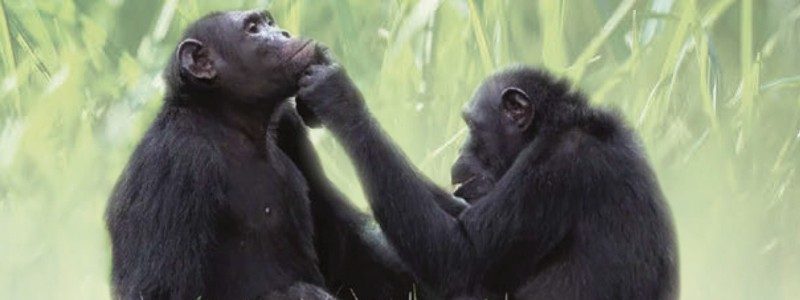
By Cheryl Trusty
Have you ever seen a dog or cat nibble grass from the lawn? Many household pets, as well as birds, bees, lizards, elephants, and chimpanzees in the wild, sometimes eat things that cure their illnesses, heal their injuries, prevent diseases, kill parasites, or aid digestion. This process of animals healing themselves is called zoopharmacognosy. This long word comes from three Greek words: zoo (meaning animals) + pharma (drug) + cognosy (knowledge).
Animals are nature’s pharmacists. Apes rub their fur with millipedes that contain insect-killing chemicals to keep insects away. Some birds do the same thing but use ants instead. Chimpanzees and their cousins, bonobos, swallow certain leaves whole to kill off worms and other parasites in their stomachs. Some chimps rub crushed insects on their own wounds, as well as those of their friends and family, to speed up wound healing. African elephants chew the bark of the fever tree to help ease arthritis pain.
How do scientists know that animals use certain plants/insects as medicine, instead of just as regular food? To find the answer, scientists observe these animals secretly to see how and when they use the plants or insects. They can tell that an animal is using a plant or insect as a medicine if:
- The animal does not eat this plant as part of its regular diet;
- The plant being eaten provides little or no nutritional value;
- The animal mostly eats the plant (or rubs it on itself) during the season when other animals are catching infections; and
- The only animals in the group that are eating the plants are those that are or can be infected with a disease.
Why should we care about how animals take care of themselves? One reason is that humans can get some of the same diseases as other animals. That’s why, by observing how animals use plants and insects as medicine, scientists can get ideas for ways to develop medicines for humans. How cool is that?
For example, scientists have seen that when certain bears come out of hibernation, they rub a special kind of root on their fur, which helps them better digest food and ease the pain of arthritis. In fact, this root has also been used in indigenous North American, Central American, and South American cultures as medicine. Another example is that leaves eaten by Tanzanian chimps contain an antibiotic which is now being studied as a powerful drug for curing cancer!
Animals in the wild are often good at taking care of themselves and protecting their families from diseases—so they don’t need a veterinarian to be healthy! But animals in confinement (in zoos, for example) don’t have access to the plants or insects they need to self-medicate, so they often need a vet to treat them for different diseases. Studying animals and how they medicate themselves in the wild can help us get clues to finding effective medicines and cures for diseases affecting humans as well as household pets.
Nature’s amazing “medicine cabinet” shrinks a little bit every day, as deforestation and climate change continue to change animal habitats and feeding patterns. As a result, animals in the wild are finding it harder and harder to survive—and may eventually become extinct if we don’t do our part to conserve the environment. Of course, we humans also benefit from caring about and protecting our environment!
Cheryl Trusty is a retired research analytical chemist for special EPA projects.

